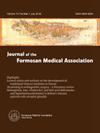Exploring the optimal lower blood pressure boundary during endovascular thrombectomy in patients with large vessel occlusion
IF 2.6
3区 医学
Q1 MEDICINE, GENERAL & INTERNAL
引用次数: 0
Abstract
Background
Current guidelines advocate for maintaining BP level below 180/105 mmHg during EVT, determining the safe lower boundary remains primarily consensus-driven by experts. This study aims to delve into the correlation between various targets of lower boundary for systolic and diastolic BP (SBP and DBP) during EVT and 3-month functional outcomes.
Methods
A cohort study was conducted across two EVT-capable centers, enrolling patients with large artery occlusion undergoing EVT within 8 h of stroke onset. Mean BP values during EVT were meticulously recorded, and logistic regression models were utilized to evaluate the correlation between outcomes and diverse lower boundary targets for SBP and DBP. Additionally, logistic regression models investigated the relationship between periprocedural BP variability and subsequent outcomes.
Results
Among the 201 patients included, having a SBP higher than 130 or 140 mmHg showed an independent association with increased good functional outcomes at 3 months (adjusted odds ratio, aOR 2.80, 95% Cis, 1.26–6.39 for 140 mmHg; aOR 2.34, 95% Cis, 1.03–5.56 for 130 mmHg). Additionally, an SBP exceeding 130 mmHg was correlated with decreased 3-month mortality (aOR, 0.24, 95% CI 0.07–0.74). No significant relationship was observed between DBP and functional outcomes. Patients with higher periprocedural SBP coefficient variance exhibited a decreased rate of good functional outcomes at 3 months (aOR, 0.42, 95% CI, 0.18–0.96).
Conclusion
A SBP range above 130–140 mmHg could potentially serve as a safe lower boundary during EVT, while minimizing BP fluctuations may correlate with improved post-EVT functional outcomes.
探索大血管闭塞患者血管内血栓切除术的最佳低血压边界。
背景:目前的指南提倡在 EVT 期间将血压水平维持在 180/105 mmHg 以下,但确定安全下限仍主要由专家共识驱动。本研究旨在深入探讨 EVT 期间收缩压和舒张压(SBP 和 DBP)的不同下限目标与 3 个月功能预后之间的相关性:方法: 在两家具备 EVT 能力的中心开展了一项队列研究,纳入了在卒中发生后 8 小时内接受 EVT 的大动脉闭塞患者。仔细记录了 EVT 期间的平均血压值,并利用逻辑回归模型评估了结果与不同的 SBP 和 DBP 下限目标之间的相关性。此外,逻辑回归模型还研究了围术期血压变化与后续结果之间的关系:在纳入的 201 名患者中,SBP 高于 130 或 140 mmHg 与 3 个月后良好功能预后的增加有独立关联(140 mmHg 的调整赔率 aOR 为 2.80,95% Cis 为 1.26-6.39;130 mmHg 的调整赔率 aOR 为 2.34,95% Cis 为 1.03-5.56)。此外,SBP 超过 130 mmHg 与 3 个月死亡率下降相关(aOR,0.24,95% CI 0.07-0.74)。在 DBP 和功能预后之间没有观察到明显的关系。围手术期 SBP 系数方差较高的患者 3 个月后的良好功能预后率较低(aOR,0.42,95% CI,0.18-0.96):SBP范围在130-140 mmHg以上可能是EVT期间的安全下限,而尽量减少血压波动可能与EVT后功能预后的改善相关。
本文章由计算机程序翻译,如有差异,请以英文原文为准。
求助全文
约1分钟内获得全文
求助全文
来源期刊
CiteScore
6.50
自引率
6.20%
发文量
381
审稿时长
57 days
期刊介绍:
Journal of the Formosan Medical Association (JFMA), published continuously since 1902, is an open access international general medical journal of the Formosan Medical Association based in Taipei, Taiwan. It is indexed in Current Contents/ Clinical Medicine, Medline, ciSearch, CAB Abstracts, Embase, SIIC Data Bases, Research Alert, BIOSIS, Biological Abstracts, Scopus and ScienceDirect.
As a general medical journal, research related to clinical practice and research in all fields of medicine and related disciplines are considered for publication. Article types considered include perspectives, reviews, original papers, case reports, brief communications, correspondence and letters to the editor.

 求助内容:
求助内容: 应助结果提醒方式:
应助结果提醒方式:


